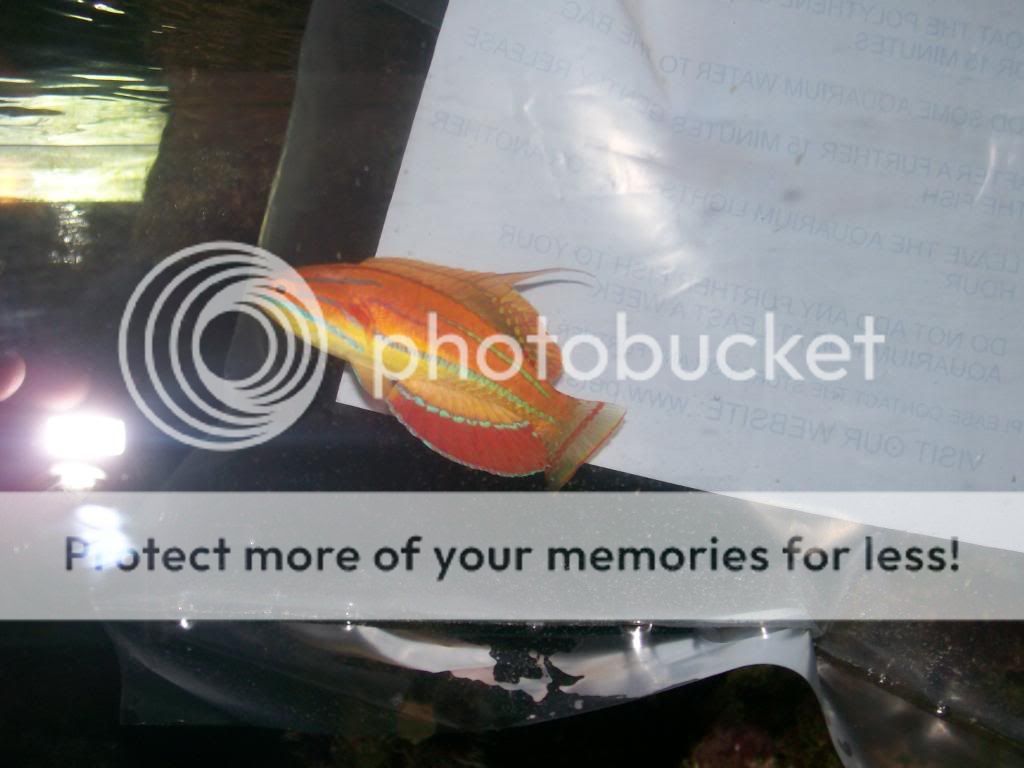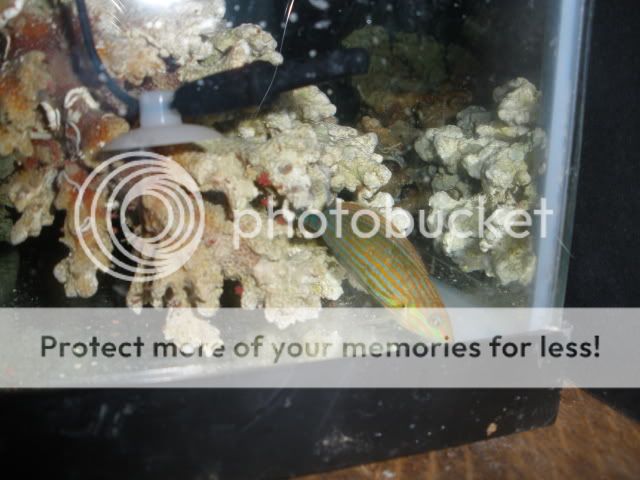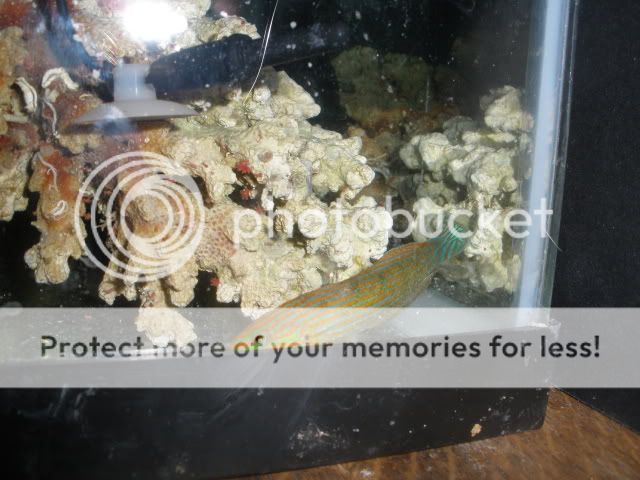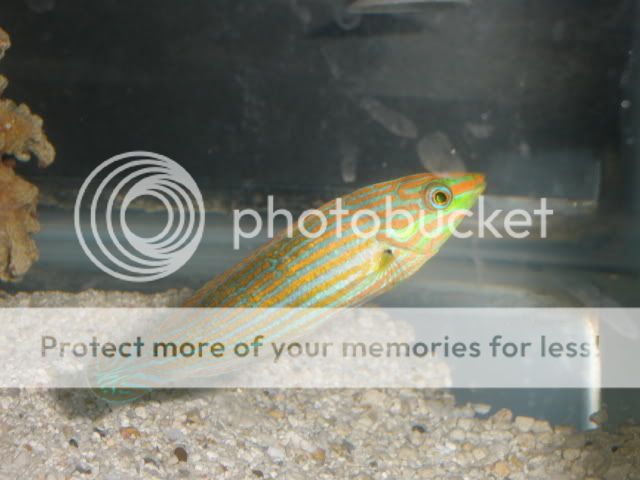So, what does Scott Michael have to say about reef safe wrasses?
With over 600 species, the family
Labridae is the third largest family represented on coral reefs. The wrasses are some of the most brightly coloured fishes in the sea, with certain species exhibiting almost garish chromatic attire. The family is very diverse, with members that vary greatly in size (from a couple inches to 7 feet in length), food habits, and life styles. It should not be surprising that these fishes are very popular with aquarists. However, when it comes to keeping them in a reef aquarium, they also vary in their suitability. In this article, we will look at four genera of wrasses that I believe are best-suited for the reef tank.
Fairy Wrasse
The genus
Cirrhilabrus is the second largest genus in the wrasse family. There are over 45 species currently recognized and more to be described. On the reef, fairy wrasses form feeding shoals, with females typically outnumbering males in these groups. Individuals swim up in the water column (sometimes up to 20 feet in the water column) and feed on zooplankton swept past by ocean currents. They often join with groups of other zooplanktivores, like flasher wrasses (Paracheilinus) and plankton feeding damselfishes. Some fairy wrasses aggregate with congeners (members of the same genus) and may hybridize on occasion.
The majority of Cirrhilabrus spp. prefer coastal reef habitats and are often found over coral rubble substrate, mixed sponge-macroalgae beds or over coral reefs comprised mainly of large-polyped stony corals. They often hang over small coral mounds, soft corals or stands of macroalgae, in which they retreat if danger threatens. There are some fairy wrasses that are found on clean oceanic reefs, where they live among luxuriant live coral growth on the reef face or fore reef slope.
The fairy wrasses are good additions to the reef aquarium. With the possible exception of small, delicate shrimps, these wrasses usually do not harm invertebrates. Fairy wrasses are shy when initially introduced to the aquarium, often hiding for several days. But if a peaceful acclimation period is provided, they will become quite brazen, even to the point of nipping or laying against the aquarist's hand or forearm as he or she cleans their aquarium. The main key to successful acclimation is to place them in an aquarium with nonaggressive species. If they are introduced to a tank with belligerent fish, they typically stay hidden and end up starving to death or succumbing to disease. It is also important that there is limited human activity inside and outside of the aquarium during this acclimation period.
While the smaller fairy wrasses are a good choice for the beginning as well as the advanced hobbyist, larger individuals often have great difficulty adjusting to captivity and more frequently succumb to the rigors of capture and shipping stress. The larger males are often much more colorful than the juveniles or females and are therefore a more tempting prospect for the aquarist. If you decide to try a larger individual, do not purchase it until it is feeding and behaving normally (e.g., swimming about the aquarium). Also look at the tip of its snout to make sure that the skin was not abraded during transport. Some individuals, in their vigorous attempts to break out of the shipping bag, will rub their snout raw. This is a potential site for viral and bacterial infections.
In the aquarium, male fairy wrasses will fight each other and may display some, but rarely lethal, aggression toward other fish introduced after them. The latter is more likely if they are closely related (e.g., other fairy and flasher wrasses) or are small docile species. As is the case with many coral reef fishes, fairy wrasses are more likely to attack species with similar color, form or behavior. In the aquarium, fairy wrasse aggression usually consists of chasing and charging, however, they will occasionally nip at and may injure an opponent. I would avoid keeping these wrasses with groupers, large dottybacks, larger angelfishes, aggressive wrasses (e.g., Thalassoma spp.), most triggerfishes and large puffers. Another potential threat to fairy wrasses are the carpet sea anemones (Stichodactyla spp.) and the adhesive sea anemone (Cryptodendrum adhaesivum). These invertebrates have been known to capture these wrasses at night.
If you want to keep more than one fairy wrasse, try maintaining a harem consisting of one male and several females. In order to avoid fighting between harem members, it is important to introduce them simultaneously or to add the females first. Then after the females have adjusted to the tank, add the more aggressive male. You are much more likely to have success in keeping groups of fairy wrasses if you place them in a larger aquarium (in small tanks even females may not get along or males may pester females to death). Males of the larger species of fairy wrasses should never be housed in the same tank, while those representing smaller species can be if the aquarium is large enough (e.g., 180 gallons or larger). In some cases, if a submissive male can avoid being beaten-up and killed by an aggressive consexual, it may reverse sex and become a functional female.
There is one drawback to keeping male Cirrhilabrus on their own. While color loss in many reef fishes can be attributed to an improper diet, in male fairy wrasses chromatic changes are more often the result of a lack of social interactions with conspecifics. If these fishes are not kept together, the males color (and possibly his gender) will begin to revert back to that of the female. For example, it is not uncommon for male Scott's Fairy Wrasse (Cirrhilabrus scottorum) to lose the bright red blotch on their sides (a chromatic feature of the male) if they are not housed with members of their own kind.
The fairy wrasses are very good jumpers. Therefore, you will need to be careful when working in the tank or when extinguishing the lights. Ambient light levels should be reduced gradually so that you do not frighten your fairy wrasse. One way to prevent them from becoming startled when the aquarium lights are turned off, a night light (e.g., a 15 watt incandescent bulb) can be mounted over the aquarium. If you want to keep the aquarium open, make a PVC frame to fit on top of your aquarium and attach fiberglass screen to it or make a cover out of egg crate material. Even when you're in the process of working on the tank, do not leave it uncovered any longer than you have to. I know of several instances where a fairy wrasse jumped out of an uncovered tank when the aquarists back was turned! Fairy wrasses are also prone to going over overflow boxes.
It is important to feed these wrasses at least twice a day to ensure they do not become emaciated and subsequently perish. Most foods will be accepted, but a variety of finely chopped fresh seafood (e.g., shrimp, marine fish flesh), frozen mysid shrimp, CYCLOP-EEZE® and a good frozen prepared food will help to maintain their colors and good health.
One sign of inadequate nutrition is atrophying dorsal musculature. When this occurs, the head seems to enlarge as the adjoining muscle tissue shrinks in mass. I have seen this condition frequently in individuals housed in reef aquariums that were fed infrequently. Although in nature they feed primarily from the water column, fairy wrasses will pick food off aquarium substrate as well.
Flasher Wrasse
This genus contains at least 16 extraordinary species. They are often overlooked because of their small size and because they are often placed in holding tanks where they hide or do not show off their true beauty. The flasher wrasses are not a threat to invertebrates, with the possible exception of small anemone shrimp (Periclimenes spp.) As a result, they are welcome introductions to the invertebrate tank. They are also great for reef tanks because they spend most of their time in the water column and serve as "dither" fish, encouraging shy fishes to spend more time in the open.
These wrasses adapt readily to captivity, especially if housed with other peaceful fishes. They are best kept in small groups, but make sure you add all of them at the same time or put the less aggressive females in before the male. It is best to only house one male flasher wrasse per tank. While I have kept males of different species together in larger aquariums, it is not without risk. Oftentimes, one of the males (usually the larger of the bunch) will begin incessantly picking on congeners of the same species. This usually leads to the demise of the other males in the tank. One of the most rewarding things about keeping flasher wrasses in groups is that the males will display more if females are present. These colorful displays are important in courtship. Solitary males will occasionally "flash" at their reflections in the aquarium glass.
With the possible exception of close relatives (e.g., fairy wrasses) or other small planktivores (e.g., fire gobies), flasher wrasses are rarely aggressive toward other fishes. These infrequent bouts of aggression usually consist of displaying or, on rare occasion, they may chase a newly introduced fish.
Although your chances of success are reduced, I have seen flasher wrasses in reef tanks with larger or more aggressive fishes. For example, a friend of mine has several flasher wrasses in a large tank (i.e., 180 gallon) with eight species of surgeonfish, a flameback angelfish (Centropyge acanthops), smaller dottybacks, basslets and other wrasses. But their enemies do include aggressive pygmy angelfishes, dottybacks, larger damsels, hawkfishes, large fairy wrasses (especially if these wrasses are introduced before them), wrasses in the genus Pseudocheilinus, Thalassoma, and larger Halichoeres spp., tangs and any fish that can swallow them (e.g., frogfishes, scorpionfishes, groupers). They are particularly vulnerable to combative species in smaller aquariums. If they are persistently harassed when introduced to a tank, they will hide and never come out to feed. Therefore, if you are going to keep them with potentially quarrelsome fish, they should be the first fish added to the tank after it has cycled.
Flasher wrasses also have invertebrate foes; they have been known to fall victim to predatory crustaceans (e.g., large hermit crabs, cancrid crabs), Elephant Ear Polyps (Amplexidiscus fenestrafer) and Carpet Anemones (Stichodactyla spp.).
Flasher wrasses should be fed two or three times a day in order to maintain their body weight. Since they feed on zooplankton and rarely pick at organisms on live rock, they will not thrive in the reef tank if they are fed infrequently. A good protein skimmer and Live Sand will help decrease the build-up of dissolved organics that may result from this more regular feeding regime. Avoid purchasing specimens that show signs of emaciation, like a pinched-in stomach or atrophied dorsal musculature. Although they can contract ich (Cryptocaryon irritans), they are not especially susceptible to this infection. Like all your newly acquired specimens, they should be quarantined before they are added to the display tank.
The Pinkstreaked Wrasse (Pseudocheilinops ataenia)
is a lovely little fish which only gets around 2.5 inches long. They are also sexually dichromatic, with the males sporting more pronounced yellow lines down the body and bluish gray markings on the gill cover.
This wrasse is a small, colorful fish that is a welcome addition to any reef aquarium (even the nano-reef). While it is very shy initially, it gradually becomes quite bold and will spend a considerable amount of time in the open. It is a good feeder, taking frozen foods and flake foods. It is ignored by most of its tankmates, although I have seen the related Pseudocheilinus wrasses chase it. If the tank is large enough and there are plenty of hiding places, the P. ataenia will simply dive between the branches of soft or hard corals.
I have never seen it behave aggressively toward any other fishes, including two smaller possum wrasses (Wetmorella spp.) I introduced to a tank where the P. ataenia was well established. The possum wrasses are very similar in shape to the Pinkstreaked and one would think they could elicit aggression. On a couple of occasions, one Pinkstreaked Wrasse I kept would inspect a larger fairy wrasse as if it was going to clean it. However, I have yet to see actual cleaning.
Linned Wrasse
The genus
Pseudocheilinus is comprised of eight small, colorful species. Like other family members, these wrasses are diurnal. All of these diminutive fishes are relatively secretive, remaining under ledges, in large crevices, among rubble or amid the branches of stony corals. Because of their small size, they are a potential target for many predators, hence their wary natures.
Unlike some of the other labrids, the Pseudocheilinus spp. do not usually bury at night or when danger threatens - instead, they hide in reef interstices. I have heard a few stories from reputable aquarists that their Pseudocheilinus sp. would bury in fine sand at night. However, I have never seen this. When stressed, these wrasses will form a mucus cocoon when they slumber. Although data on the sexuality and mating systems of the Pseudocheilinus spp. are lacking, there is evidence that it is a protogynous hermaphrodite.
Food habit data is available for two species. The Eightline Wrasse (Pseudocheilinus octotaenia) feeds primarily on small crabs and other crustaceans, mollusks, tiny sea urchins and fish eggs. The more diminutive Sixline Wrasse (Pseudocheilinus hexataenia) feeds heavily on small benthic crustaceans (e.g., shrimp and isopods), but it also feeds on foraminiferans (which are minute, shelled protozoa). It may also serve as a facultative cleaner, nipping parasitic isopods and copepods off of the fins and bodies of other fishes. I have seen P. hexataenia clean the Giant Moray Eel (Gymnothorax javanica) in the Red Sea and have seen them in captivity on a number of occasions. The Pseudocheilinus spp. will also eat zooplankton.
When it comes to their care, the biggest problem with the Pseudocheilinus spp. is that they often suffer from stress related maladies during shipping. In part, this may be due to copious slime production in the bag, which may interfere with respiration. If you get a healthy individual to begin with, these tend to be very durable little fishes. Feed Pseudocheilinus spp. a varied diet that includes finely chopped sea foods, frozen mysid shrimp, frozen preparations for carnivores and a color enhancing flake food. In a reef aquarium, these fishes will only need to be fed once every other day as it will forage on micro-invertebrates on the live rock. Once it acclimates to the aquarium, it is an aggressive feeder that can compete with most fish tankmates. However, make sure newly acquired individuals get enough to eat if housed with boisterous fishes.
Pseudocheilinus wrasses can also be aggressive towards closely related, similarly shaped species or fishes added to a tank once they have become established residents. Even the more diminutive Sixline Wrasse can become a big bully if the tank is small and/or docile species are added to its domain. This is less of a problem if your tank is large and replete with hiding places. Larger Pseudocheilinus spp. may thin out your shrimp and crab stocks. They will occasionally leap out of an open aquarium when the lights are extinguished or when they are harassed by other fish. When selecting a specimen, avoid those that are producing excessive amounts of slime, this usually indicates a parasitic skin infection.
The members of the genus Pseudocheilinus are well known for their habit of feeding on pyramidellid snails (small gastropods that are parasites of Tridacna clams). The parasitic snails are nocturnal, spending the day near the base of the clam or between the scutes of certain species of clams. As a result, these wrasses are not likely to encounter the snails very often and have the opportunity to prey upon them. The Pseudocheilinus spp. will also feed on noxious flatworms. That said, do not expect any of them to eradicate these pests if your tank is already infested with them!
Possum Wrasse
These wrasses are known commonly as the possum, pygmy or sharpnosed wrasses. The three species are the Whitebanded Possum Wrasse (Wetmorella albofasciata), Yellowbanded Possum Wrasse (W. nigropinnata), and the Pygmy Possum Wrasse (W. triocellata). Of these three species, I have found the Whitebanded and Yellowbanded to be most common in the aquarium trade.
Make sure you do not mistake the juvenile of the Slingjaw Wrasse (Epibulus insidiator) for the young W. albofasciata (the young slingjaw and this possum wrasse are very similar). The slingjaw wrasse gets approximately 14 inches in length and is a voracious predator! Relatively little is known about the biology of these wrasses. All three species are quite secretive, spending their days moving within crevices and from hole to hole under overhangs and in caves. They are some of the smallest of the wrasses, reaching maximum lengths of 2.5 inches.
These labrids get around in a different manner than most of their kin. They seem to hover, float and skulk about more than others in the family. Adult Wetmorella wrasses are typically found in pairs or in groups. There is no data available on the food habits of these fishes. I assume that they eat small crustaceans, polychaetes worms and possibly foraminiferans (shelled protozoa) and tiny snails (e.g., prosobranch gastropods). (These assumptions are based on data available on the diets of similar sized, secretive wrasses.)
Because of their diminutive sizes, the possum wrasses can be kept in small to very large tanks. It is possible to keep a possum wrasse in a nano-reef tank, but you will need to feed them frequently as there will not be enough natural fodder in a small tank to sustain them (more on this later). They can be kept in a large reef aquarium as well, although you may not see them that frequently in a big tank with loads of live rock.
The major Wetmorella drawback is that they are quite reclusive. They spend most of their time moving among the rock work. Occasionally you will see them peeking out of a crevice or a cave or they may dash out to grab a passing morsel (OK, maybe not dash as they do not swim that fast). While these wrasses are not likely to parade around the tank, they will become more bold once they have acclimated and if they are not picked on by piscine neighbors.
The possum wrasses are more likely to spend time in the open if kept in relatively quite surroundings. Unlike some wrasses, the Wetmorella spp. do not bury in the sand at night. They simply "hole up" in the reef. Not only are they shy by nature, they are also potential targets of tank bullies. It is best to avoid keeping them with more pugnacious species that may pick on them or with fishes that will prevent them from getting enough to eat. That said, I have noticed that many fish simply ignore them. This may be due to their odd behavior, the small size, and somewhat divergent body shape of the possum wrasses. I have never seen these fishes behave aggressively toward other fishes. If you plan on keeping more than one individual of the same species or even congeners in the same tank, make sure the tank is large enough (e.g., 70 gallons or larger) and that it is replete with places for them to hide. Small holes are fine, but they really seem to appreciate caves and ledges. When there are aggression problems, the largest Wetmorella in the tank is likely to be the bully, no matter what species it is.
These microcarnivores will feed on tiny worms and crustaceans that associate with live rock. They also readily take aquarium foods, like mysid shrimp, frozen preparations and flake food. My Wetmorella seemed to prefer CYCLOP-EEZE®, which they pick out of the water column. Even though they will eat introduced fodder, I think it is still best to house them in a tank with live substrate because they are so reclusive (especially when first added to a tank) and prone to being dominated by tankmates. This will enable the possum wrasses to feed throughout the day on the minute prey living on the rock. A productive refugium can also be helpful to ensure that they get enough to eat.
Although they are not bullet proof, I have never had a Wetmorella succumb to a parasitic infection. I believe the most likely cause of death would be malnutrition resulting from infrequent feeding and a impoverished microinvertebrate population in their tank. They might also be intimidated, and thus not get enough to eat, if their tankmates are too boisterous at feeding time. Another possum wrasse problem is shipping stress. Although I have not had that many of these fishes shipped to me at this point, I think they are prone to succumbing to shipping stress.
While there are other wrasses that will acclimate to life in captivity, I have found that these groups are durable and better-suited to living with invertebrate tankmates than many others in the family. Happy fish-watching!
Scott W Michael
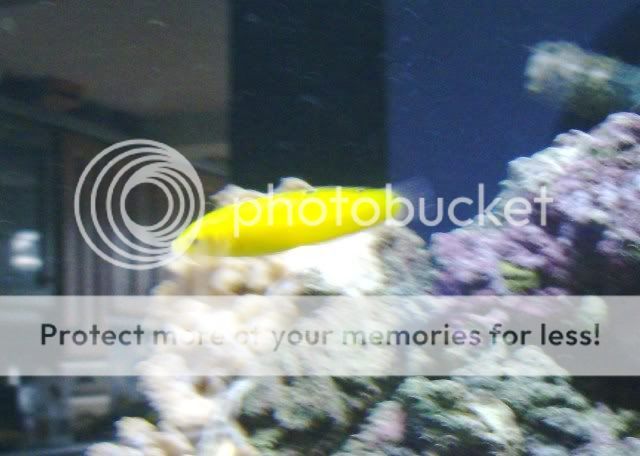




 was a little worried when I got up at 6:45 to discover no fish swimming around
was a little worried when I got up at 6:45 to discover no fish swimming around  Mind you as soon as the lights went on he gave himself a shake and out he came
Mind you as soon as the lights went on he gave himself a shake and out he came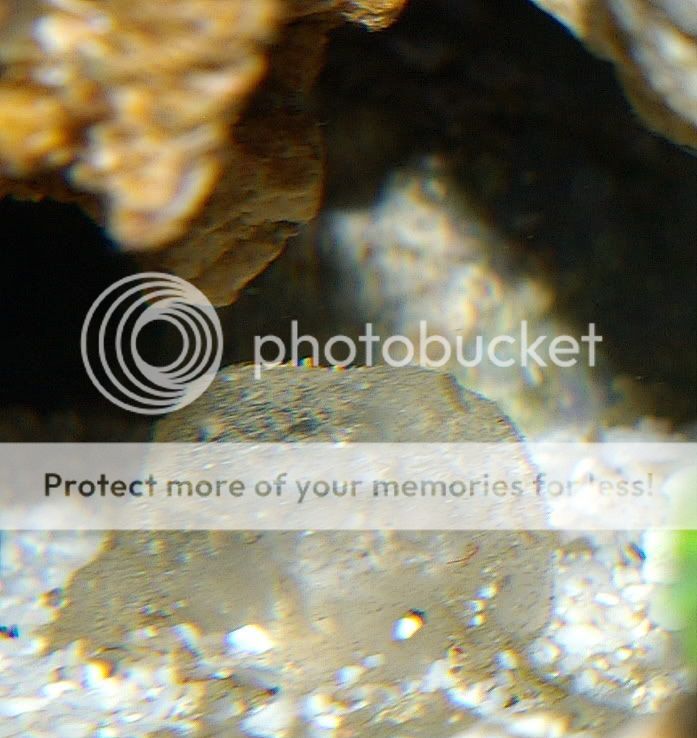

 still yet to get a pic of him in tank as he is very shy.
still yet to get a pic of him in tank as he is very shy.